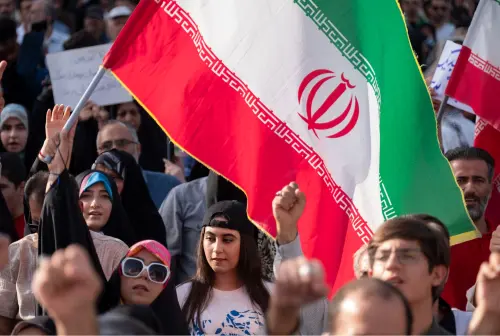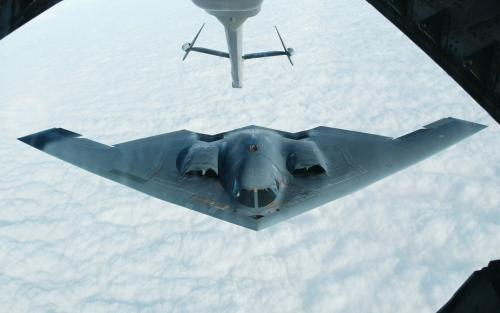I want to sound a note of warning about recent developments between Iran and Saudi Arabia. It is the typical analytic tendency to predict that tomorrow will be essentially the same as yesterday and today. That’s because it is correct in the vast majority of cases.
But that is also why it is often difficult for even the best analysts to recognize—let alone predict—discontinuous change. Major events often catch the finest experts by surprise. I fear that the Middle East has entered a period where major, discontinuous change has become far more possible, even probable.
I see this week’s events in Saudi Arabia and Iran as evidence of just that. Five years ago, the Saudis might not have felt the need to execute Nimr al-Nimr because they did not feel as threatened by a wider Shiite threat (both internal and external), exaggerated though we may believe it to be. Five years ago, the Iranians would probably have settled with a perfunctory verbal condemnation and left it at that. And five years ago, the Saudis probably would have brushed aside any Iranian criticism. The last few days have demonstrated that today is not five years ago.
A fearful new Middle East
The problem is that the context has changed dramatically. Today there are all-out civil wars burning in Iraq, Syria, Yemen, and Libya, and would-be civil wars simmering in Egypt, Turkey, Mali, Somalia, and South Sudan. Bahrain, Lebanon, Jordan, and Tunisia all face dangerous internal discord. Iran and Saudi Arabia now lead rival coalitions waging proxy wars—figuratively across the region, and literally across Syria, Yemen, and (to a lesser extent) Iraq.
The civil wars generate their usual destabilizing spillover in the form of refugees, terrorism, economic problems, secessionism, and radicalization. They both destabilize neighboring states and suck them into their vortices. Fear of further state failure, radicalization from civil wars, and a deepening sectarian divide that is now increasingly an ordering principal in the region have conjured a wider Sunni-Shiite rift. When King Abdullah II of Jordan first warned of this 12 years ago, it seemed highly unlikely. Today, the perception that it is a reality is widespread, and that perception is making it a reality as various countries take actions based on the perception.
Meanwhile, the plunge in oil prices has undermined the economic foundations of many of the most important countries of the Middle East. They mix with longstanding frustrations over the deficiencies in education, endemic corruption, and misgovernance of the Muslim Middle East. As a result, many regional states that once seemed hopelessly strong, like Egypt and Saudi Arabia, now seem dangerously fragile.
And rightly or wrongly, many of the states of the region feel abandoned by the United States, their traditional protector and mediator.
Up the escalator
I look at this context and worry that the conditions in the Middle East are such that the unlikely and the unexpected seem far more likely. This is not to suggest that we should expect the worst from every situation, but that we should be more careful about predicting that events will occur as they typically would have in a different, more peaceful and stable set of circumstances.
Do I think that Saudi Arabia and Iran will come to direct blows over this incident? Almost certainly not, at least not yet. But I absolutely see this is part of a dangerous spiral of escalation between them. The Saudis are frightened of American disengagement and ascribe most of the problems of the region (including many of the civil wars) to deliberate Iranian subversion.
[W]e should be more careful about predicting that events will occur as they typically would have in a different, more peaceful and stable set of circumstances.
As always, their modus operandi in such circumstances is to confront Iran, only they are doing so far more aggressively and boldly than they ever have in the past—something I also attribute to their sense that the region is spinning out of control and therefore they need to assert themselves more than they ever have before to stabilize it. But their actions are highly provocative to Iran, which in turn arrogantly ignores how its own activities (and it has been part of the problems of the region, including the civil wars, even if not to the extent the Saudis believe) frighten and anger the Sunni states. They similarly overlook how their reactions drive the Saudis and their Sunni allies into further paroxysms of frustration and fear.
Consequently, I suspect that there will be subsequent actions on both of their parts, either as a further escalation of this incident, or as the next incident in what has become an increasingly reckless and regular tit-for-tat.
Some of my most insightful colleagues have suggested that these will play out in the civil wars themselves—in Syria, Yemen, and Iraq. That is certainly possible, but in some ways, that might actually be a good response. There are so many bad things happening in those places already that Saudi and Iranian reprisals might seem less provocative in that context. Perhaps the worst they can do (and almost certainly will) is to further dig in their heels against negotiating an end to those conflicts on terms acceptable to the other. However, there is already so little likelihood that either would be willing to make meaningful concessions to the other any time soon that again this might not be much of an escalation.
That is why I worry that the Saudis and/or Iranians will act next somewhere else. Somewhere where their action will stand out and so cannot be missed as a riposte to the other. I don’t know where that might be or in what circumstances, but the region and their rivalry strikes me as having entered that phase. And if they do so, that will push them and the region further into the vicious cycle it seems to have already entered.
The Brookings Institution is committed to quality, independence, and impact.
We are supported by a diverse array of funders. In line with our values and policies, each Brookings publication represents the sole views of its author(s).




Commentary
Perils of prediction: Why it’s so hard to guess the fallout of the Saudi-Iran split
January 5, 2016